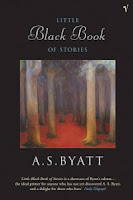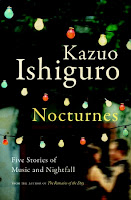 For the majority of my life, I’ve associated with Dracula (the character) with scary things I’d rather not imagine thank you very much. “I vant to suck your blood” refrains and the truly awful Francis Ford Coppola movie that I remember seeing in the theatre did nothing to help the cause. Bram Stoker’s (pictured left) book was mentally filed, “never going to read.”
For the majority of my life, I’ve associated with Dracula (the character) with scary things I’d rather not imagine thank you very much. “I vant to suck your blood” refrains and the truly awful Francis Ford Coppola movie that I remember seeing in the theatre did nothing to help the cause. Bram Stoker’s (pictured left) book was mentally filed, “never going to read.”
And then.
#1. The Undeath Match happened.
#2. 1001 Books You Must Read Before You Die happened.
#3. The Strand happened (and I fell a little in love with the TP edition I found sitting a top a pile of totally unrelated books).
#4. “My RRHB read the book in one sitting and wouldn’t stop talking about it” happened.
Which meant I simply couldn’t ignore it any longer.
And rightly so. It’s an excellent novel. Echoes of one of my all-time favourite books, Frankenstein, are found within the epistolary format; the novel contains a truly kick-ass female heroine (why was that never portrayed in any film who actually stands up and fights both for her life and for her friends [in a totally appropriate 19th century way, of course] in a way a certain, modern character [ahem, starts with a “B” and ends with a “hella” er “ella”] never does); and there are some really fun, creepy scenes of Dracula making his way to England (the boat, ahhh, the boat) that actually made me shudder and I flipped the pages. Put all of it together and I’m kind of shocked to say that I’m really glad I finally finished Dracula.
If I have but one criticism of Stoker’s work, it would have to be the bits of the book told in colloquial dialogue. I found Van Helsing’s sections hard to understand and the way he spoke to be kind of silly and affected (not his character; that’s exactly the opposite of this). But I got over this quickly as the book’s action and pacing ripped me along on another part of the adventure. The story’s so rich, so layered and so utterly engaging that my own preconceptions about affected speech/dialogue in novels can be set aside.
Also, it’s pretty neat to see the literary evolution of the vampire from the sort-of beginning. I’m sure there were earlier moments in terms of the vampire appearing in literature, but I like thinking about all the moments in pop culture that has sprung from this particular text. Annywaaay, I just loved it.
READING CHALLENGES: 1001, baby.
WHAT’S UP NEXT: Reading The Children’s Book by A.S. Byatt, Clean by Alejandro Junger, the first Sookie Stackhouse book and Sometimes a Great Notion. Yes, we’ll see which one I actually finish first. Your guess is as good as mine.









